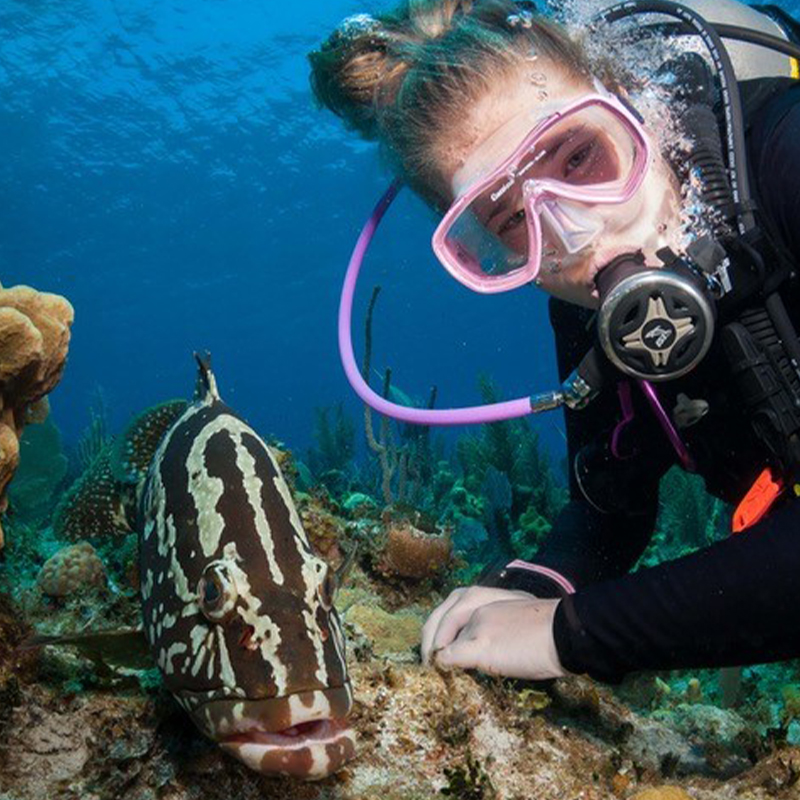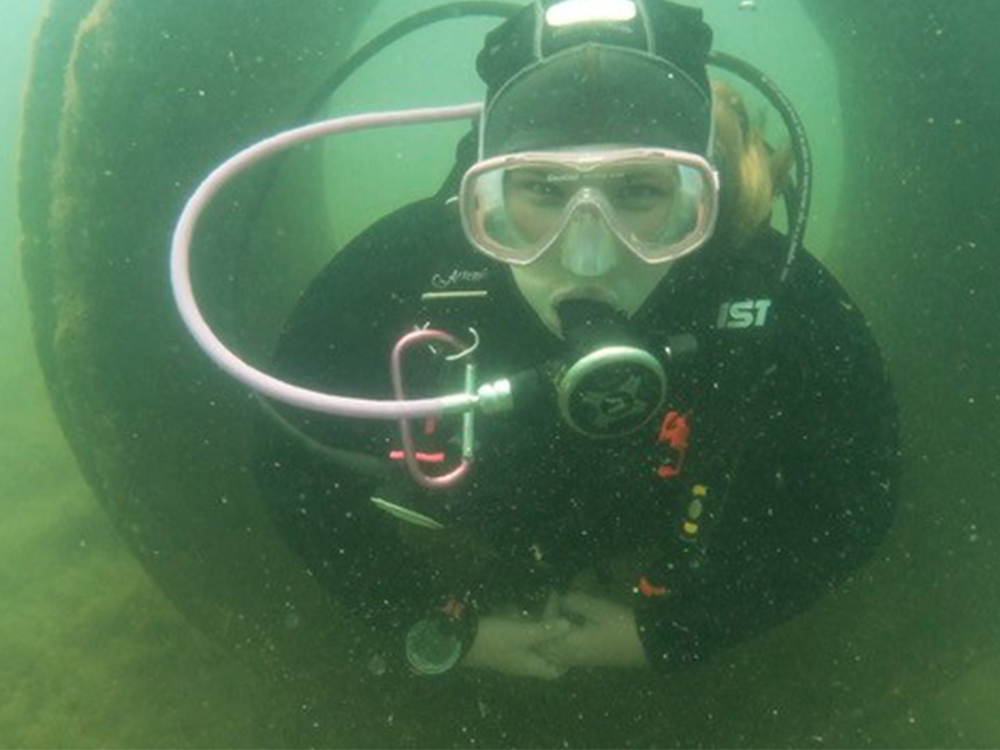From the Field: Biology Student Dives Into Scuba Safety
08.27.2019
 Helfrich poses with a grouper during a Caribbean dive earlier this year.
Helfrich poses with a grouper during a Caribbean dive earlier this year.
Growing up in Michigan, UT Dallas biology and history junior Elizabeth “Tess” Helfrich inherited a love of scuba diving from her parents. The family loved spending time diving in bodies of water across their state, whose name is derived from the Chippewa word meaning “large lake.”
They especially enjoyed exploring shipwrecks in the Great Lakes. Once America’s busiest highways, the Great Lakes is popular with scuba divers because the cold, fresh water has preserved thousands of sunken ships.
By her mid-teens, Helfrich had earned a rescue diver certification and eventually became a divemaster.
Helfrich, an emergency medical technician who works with the University Emergency Medical Response team, hopes to work in undersea or hyperbaric medicine one day.
This past summer, the McDermott Scholar and Boren Scholar continued to follow her passion through an internship with Divers Alert Network in Durham, North Carolina. The network is the diving industry’s largest association dedicated to scuba diving safety. Staffed by dive-medicine trained medical professionals, many of whom are divers themselves, its physicians, nurses and paramedics provide medical information to divers and evacuation assistance.
 Tess Helfrich
Tess Helfrich
As a medical intern, Helfrich completed a retroactive analysis under Dr. Matías Nochetto, director of Medical Services and Programs for Divers Alert Network, of diving incidents involving children ages 10-17.
Children face special challenges in diving because they are still maturing both physically and psychologically. They are predisposed to ear barotraumas due to pressure changes in the water and may be more prone to accelerated heat loss and hypothermia. They may lack the mental maturity to manage risks, and they can behave unpredictably in stressful circumstances.
Helfrich also helped develop a database of dive emergency resources and organized a webinar on how to safely plan a dive for a scuba forum with over 35,000 international members. She recommends that before divers head out to a site, they should research local medical care in addition to diving conditions like current, depth, entry and exit points, boat traffic and local marine life.
Divers also need to know the physics of ascending and descending to avoid decompression sickness and other injuries.
“One of the most important things that divers need is an emergency action plan that includes numbers for local emergency medical systems and essential first-aid equipment,” Helfrich said.
 Helfrich swims in Fantasy Lake in North Carolina.
Helfrich swims in Fantasy Lake in North Carolina.
She tries to fit in some diving time wherever she travels, and this summer was no exception. Helfrich was able to do some local diving in quarries and at the North Carolina coast with fellow interns.
“My best friends are in the diving community. They are the most inspiring people I know,” Helfrich said.
One of her favorite shipwreck exploration adventures took place in the Red Sea, an inlet of the Indian Ocean lying between Africa and Asia. There, she saw the SS Thistlegorm still in “pristine condition,” even though the British Merchant Navy ship sunk in 1941.
But Great Lakes diving brings unique challenges. Helfrich is trained to use a dry suit, hood and gloves to withstand water as cold as 36 degrees at the shipwreck level. Divers there can find everything from 19th-century wooden schooners and modern steel freighters to tugboats and barges. Often they are able to see a ship the way it looked the day it went down.
“It can be eerie diving in cold water because there’s not much marine life happening,” Helfrich said. “Most divers eventually prefer the warmer, colorful waters of the Caribbean.”
–Robin Russell
Tags: Students